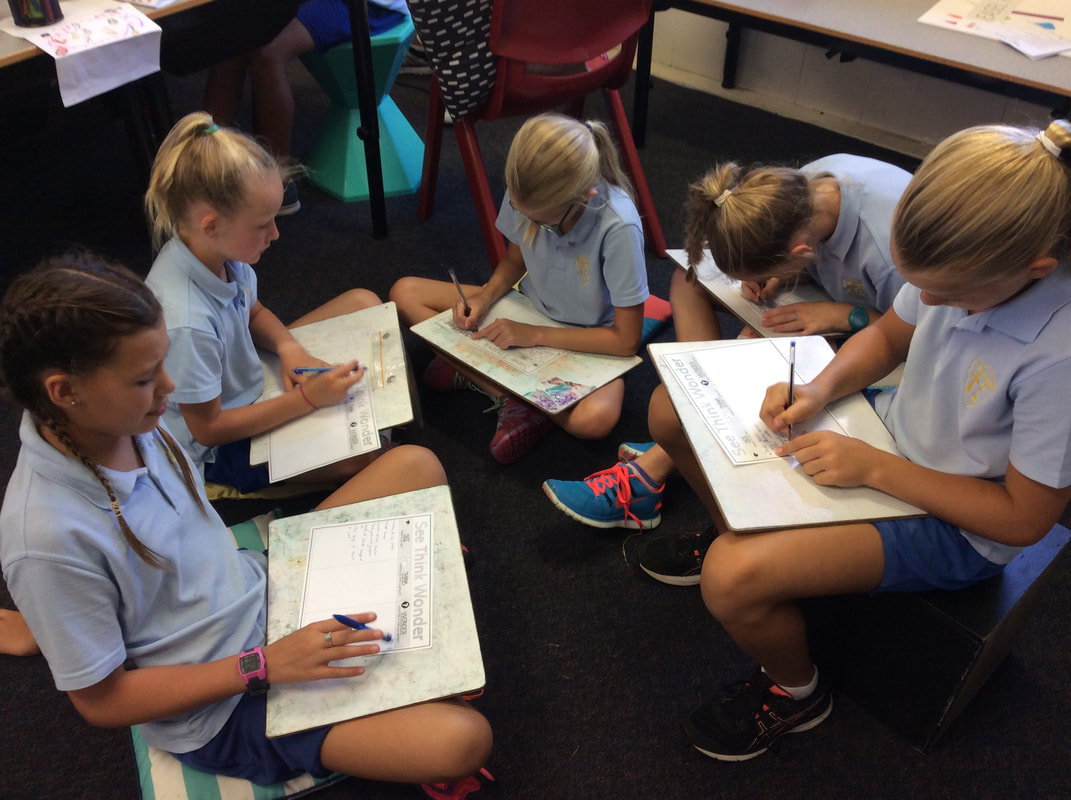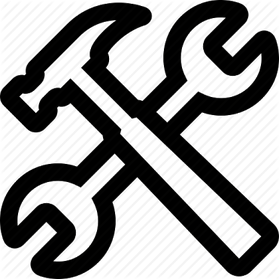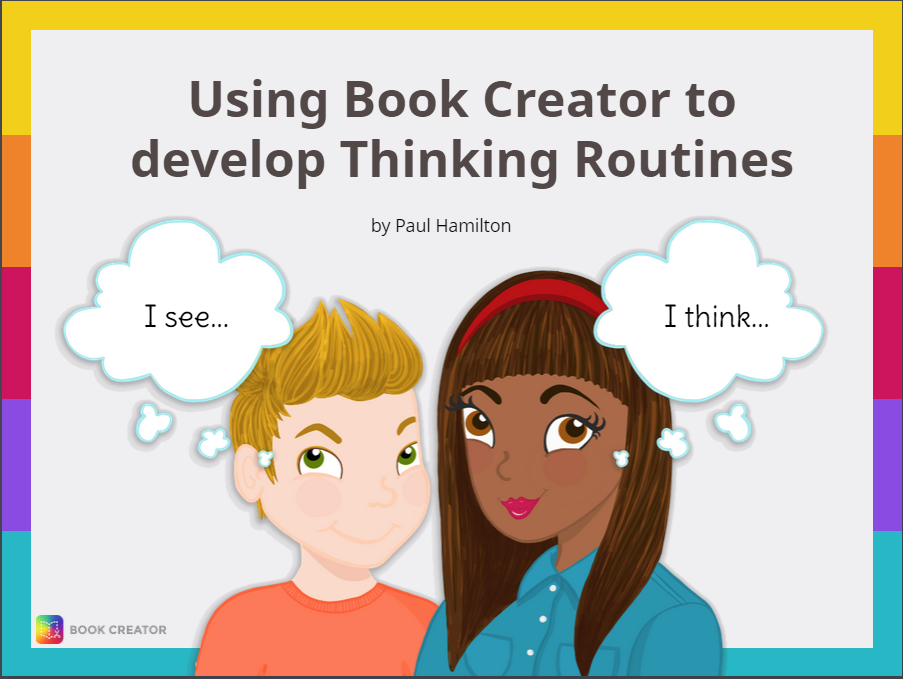|
Thinking routines are easy to use mini-strategies that can be repeatedly used in the classroom, across a variety of content and grade levels. Routines take on more power when they are used to support students ongoing learning. Each routine targets a different kind of thinking and by bringing their own content, teachers integrate the routines into the fabric of their classrooms.
Routines help direct student thinking and structure classroom discussion. Begin by thinking about the type of thinking you want your students to do and try to identify a thinking routine that will help bring that to the foreground. |
PHASES OF DEVELOPMENT
When using thinking routines as strategic vehicles in which to scaffold the thinking of our learners, we need to consider as teachers where we (both teacher and learner) are at in the phases of development continuum. Is this the first time you have used this routine? Or have you been using it regularly for a while now? Or is it so ingrained your learners use it without realising it?
The answers to these questions will depend on the routine you are using and how often it is used within your educational context. It is therefore conceivable that a learner could be at varying phases at the same time for different routines. Examine the stages of development below:
The answers to these questions will depend on the routine you are using and how often it is used within your educational context. It is therefore conceivable that a learner could be at varying phases at the same time for different routines. Examine the stages of development below:
|
INITIAL PHASE:
|
DEVELOPING PHASE:
|
ADVANCED PHASE:
|
|
NB: The following phases of development have been adapted from an article written by Andrea Elliott - The Journey to a Culture of Thinking.
|
| ||||||
THREE WAYS OF LOOKING AT THINKING
ROUTINES
|
AS TOOLS
Thinking routines operate as tools for promoting thinking. Just like with anything, it is important that educators choose the right tool for the job. Therefore, we must first identify the kinds of thinking we are trying to elicit from our students and then select the particular thinking routine that supports that thinking. By identifying the thinking one is trying to elicit and support in students from the beginning, an educator is able to clearly assess the responses and justifications given by students with the response. |
|
AS STRUCTURES
The thinking routines have been carefully crafted by the team at Project Zero to support and structure the thinking of students. The steps of the routine act as a natural scaffold that can lead students' thinking to higher and more sophisticated levels. Ritchhart highlights that 'in using the routines the goal is never simply to fill out or complete one step and move onto the next but to use the thinking occurring at each step in the subsequent steps.' Think about how you will use students' responses and connect them to the next step in the routine, continually looking for how good thinking helps to set up each sequential step. Once a thinking routine is well-known to students, the routine itself can become a useful tool in structuring group discussions. |
|
AS PATTERNS OF BEHAVIOUR
Ritchhart states that 'the idea of thinking routines must be understood within the broader notion of classroom routines as culture builders.' He says that thinking routines are a useful way of thinking about the practice of teaching as they recognise that effective teaching is more than a unit of work or a well-planned lesson. All instruction takes place with a context, and routines contribute to the establishment of that context through the creation of 'socially shared, scripted slices of behaviour'. The name 'thinking routines' was purposefully chosen as with their repeated use they become part of the fabric of the classroom. Effective teachers of thinking set out to address the thinking of their students in this way. They utilise a set of routines that they can draw upon again and again across a range of disciplines to scaffold the thinking of their students. As routines are scripted and repeatedly used, students become more confident in drawing upon them with increasing independence. |
There are a number of routines that have been grouped into a range of broad areas:
|
|
|
Using Book Creator to Develop Thinking Routines
Please note that these pages contain a collection of resources and links to activities to support and enhance classroom teaching and learning. The thumbnails and activities are the property of the authors/creators and available due to their generosity in sharing their work. All sources are acknowledged on the ACKNOWLEDGEMENT OF SOURCES page.
This website contains NSW syllabus content prepared by the NSW Education Standards Authority for and on behalf of the State of New South Wales which is protected by Crown copyright. https://www.educationstandards.nsw.edu.au/wps/portal/nesa/home
This work is licensed under a Creative Commons Attribution-NonCommercial-ShareAlike 4.0 International License.
This website contains NSW syllabus content prepared by the NSW Education Standards Authority for and on behalf of the State of New South Wales which is protected by Crown copyright. https://www.educationstandards.nsw.edu.au/wps/portal/nesa/home
This work is licensed under a Creative Commons Attribution-NonCommercial-ShareAlike 4.0 International License.






